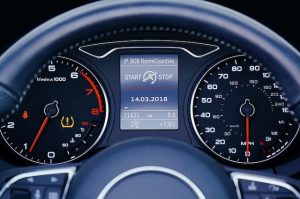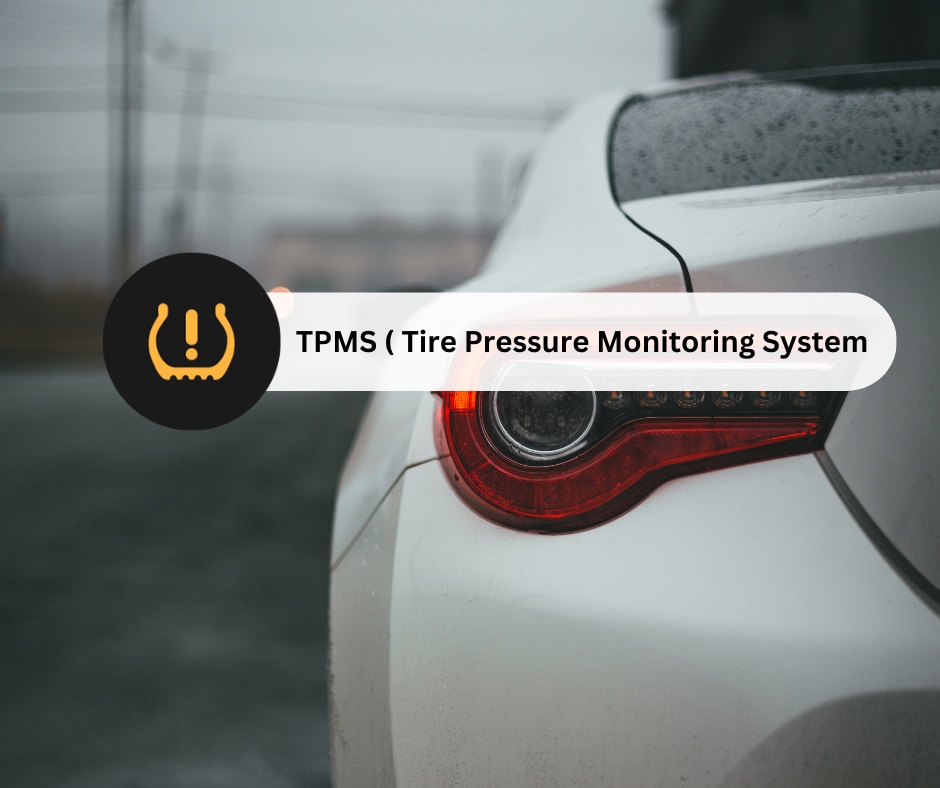Almost all modern cars are designed with advanced features, auto systems, and lights on the dashboard to ensure efficient performance, longevity, and safety of the vehicle. These systems help you to keep track of all crucial functions of your car such as TPMS or TPMS light is responsible to keep tires properly inflated and in the right working order.
Tires are the most important parts of cars or any other vehicle which allow it to stand and run smoothly on the road. An effective TMP system is mandatory to keep an auto check of tire pressure and its working during the drive. To know more about the importance of this system, we need to understand TPMS’s meaning and its working order.
You can explore here the meaning of the tire pressure light, low-pressure symptoms, and its impact on car performance.
What is TPMS?
Most people ask what TPMS means on a car or why TPMS is important. It’s simply an automatic system to monitor tire pressure. It has sensors that are banned in the tire wall. In case of low tire pressure, these sensors send signals to the car dashboard system, and the low tire pressure symbol or light becomes on.
The appearance of the TPMS light on the dashboard means you need to check your tire pressure immediately and refill it to the optimum level. It can lead to excessive damage including rapid tread wear, poor traction, and reduced performance of the vehicle if left untreated.
Different Ways TPMS Light Can Alert You:
Normally tire pressure light blinking means that your car’s tire pressure is going below the optimum level. However, it can behave differently in different types and models of cars. Therefore, we listed here some different ways in which your TPMS light can alert you.
Turn On
If you are experiencing tire pressure light during long drives or even after driving a few miles, one or two tires of your car have low pressure. It’s highly recommended to inspect your tire pressure by using a pressure gauge or stop by the nearest service shop to inspect and refill the pressure.
It will protect you from massive tire wear troubles.

Keep Blinking
Another common way the TPM light can alert you is that it starts turning on and off or blinking on your dash continuously. It either happens due to low tire pressure or a sudden change in external temperature.
Flash And Then Stays On
Turning on and off all the lights in the dashboard right after starting the car is a norm, but in some cases, the tire pressure light stays on after accelerating the engine. The tire pressure light flashing indicates the trouble with your TPMS system, not the tire pressure.
Other Causes of Low Tire Pressure Light On:
Though the tire pressure light on the dashboard indicates the low pressure in one or more tires of the car, some other reasons can also cause the turning on the low tire pressure light.
Some main reasons that can result in the turning on of TPMS light are listed here;
Changing Temperature
One of the major reasons other than low tire pressure for turning on the TPMS light is the change in external temperature. Usually, in the morning and evening hours, tire pressure is reduced due to low temperature and becomes normal in day hours.

Bad TPM Sensors
If your tire pressure light is still on after refilling the pressure, your TPM sensors are malfunctioning. Usually, TMP sensors fail to perform their function due to aging, and replacing them can fix the issue.
However, the entrance of gasses other than air or nitrogen can also cause the wearing of TPM sensors.
Faulty Wheel Speed Sensors
Modern cars also have wheel sensors which are also linked to the same computer system as the TPM system. Bad or faulty speed sensors due to fluid leaks, bad head gaskets, and damaged valves can result in sending wrong information to the TPM system.
Need A Reset
Sometimes tire pressure light blinking indicates the need for a reset, especially after changing the wheel. The reason is that the new wheel may have different TPM sensors than the previous one and it causes the blinking of the tire pressure light.
You can use the car manual to know where is the TPM reset button, or consult a professional mechanic.
Poor Alignment
Poorly aligned car tires can also result in sending wrong signals to TPM and other systems of the car. It can also lead to noise production during driving and life-threatening road accidents. Therefore, always hire a professional mechanic to replace or fix new car tires.

How To Fix It?
Just like other problems, the solution to low tire pressure light depends upon the root cause of the problem. However, you can use the following solutions according to your situation to turn off the tire pressure light.
- Checking and refilling the tire pressure. It keeps your car tires properly flattened and in the right working order.
- Repairing the damaged parts linked to TPM, engine, and wheels of the car is also an effective way to tackle this issue.
- TPM sensors usually last 10-12 years. Therefore, replacing TPM sensors after a specific duration can help you to avoid this issue.
- Sending the car to a creditable service station is the best and permanent solution to not only TPMS but also all other problems which can reduce the life and performance of the vehicle.
Bottom Line
TPMS or tire pressure monitoring system is one of the most important systems which keep you notified about the tire’s pressure. It helps you to keep your car tire properly inflated which enhances their durability, traction, and overall performance on the road.
You can use this guide to know the reasons behind low tire pressure light blinking, the causes of TPMS malfunctioning, and understand how to turn off the light. Using the car manual and professional services can also help you to keep your TPMS in the right working order.
Last Updated on May 25, 2023 by admin

Mac is an Automotive enthusiast. He owns up to 15 vehicles. He deals with Auto problems and shows his skill to Car owners who are seeking any type of Car help.





